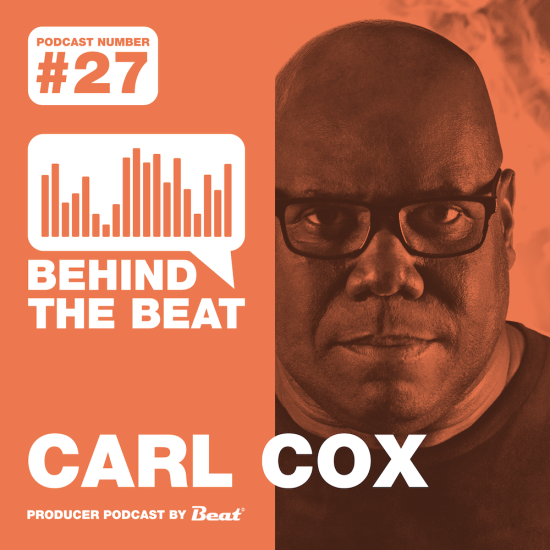Novation product specialist Chris Calcutt gives an interview on Novation's brandnew hybrid synth Peak and the best of both worlds - analog and digital.
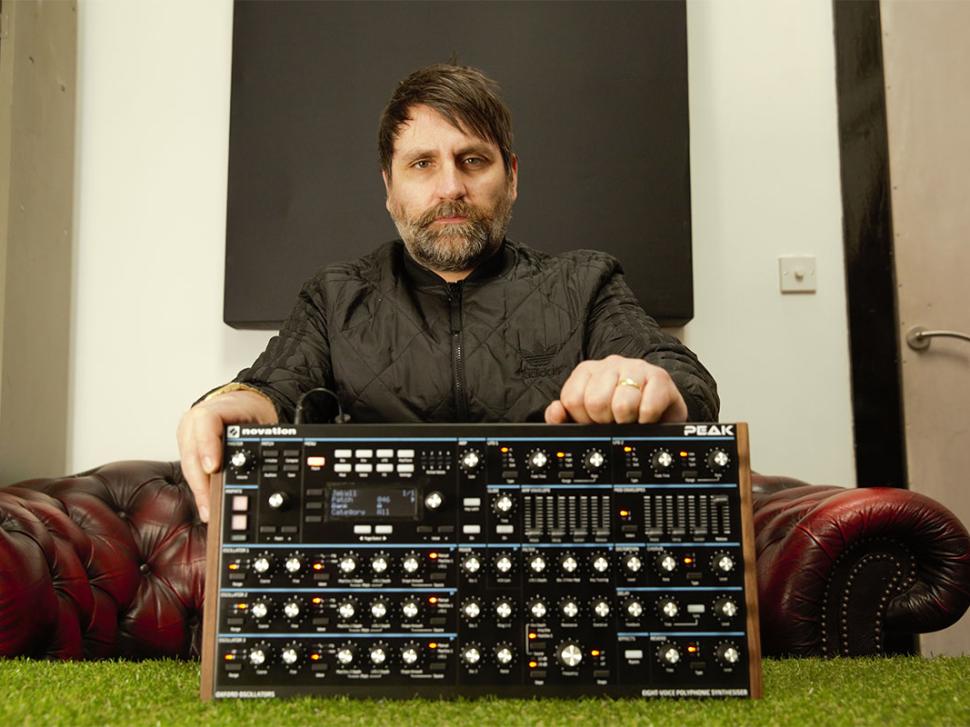
Beat / Peak was developed with the aim to be "better than the best of both worlds". What inspired you to create a hybrid synthesizer with digital oscillators and an analog filter?
Chris / Novation had been well know for building synths throughout the 1990s but in more recent years we had perhaps become more well know for our Grid-based and DAW controllers. Of course Novation has continued to build synthesisers throughout this time and the Nova synth engine was rebooted around 2010 with the Ultranova. This was later joined by the MiniNova but in 2013 we released the successful analogue mono synth - Bass Station 2.Novation was originally known as a synth company, so we’ve always been very serious about building synthesisers. When the Bass Station 2 was released we started to think that it would be great to build an analogue polyphonic synth, so we set about prototyping and exploring what we could do. It soon became obvious that to build a fully analogue 8-voice was going to be do-able but very expensive to make. Of course a lot of people would have been very happy with a fully analogue system, but we decided that with the the cost of this approach, there already was a growing choice of analogue polys appearing on the market. So maybe we should start to look at a new and innovative ways of developing what the synthesiser could be about in the modern analogue and digital world.
Our lead synth designer Chris Huggett has always been known for his interesting and innovative approach to synths design - whether it was to build a synth under 200 GBP in the late 70s with the EDP Wasp or to push what could be done with synthesis using digital oscillators and interesting filter techniques with the Oxford Synth Company’s OSCar. So he relished the challenge to look for a new approach that could marry both modern digital and analogue technology to push what the next generation of Novation synth could be about.
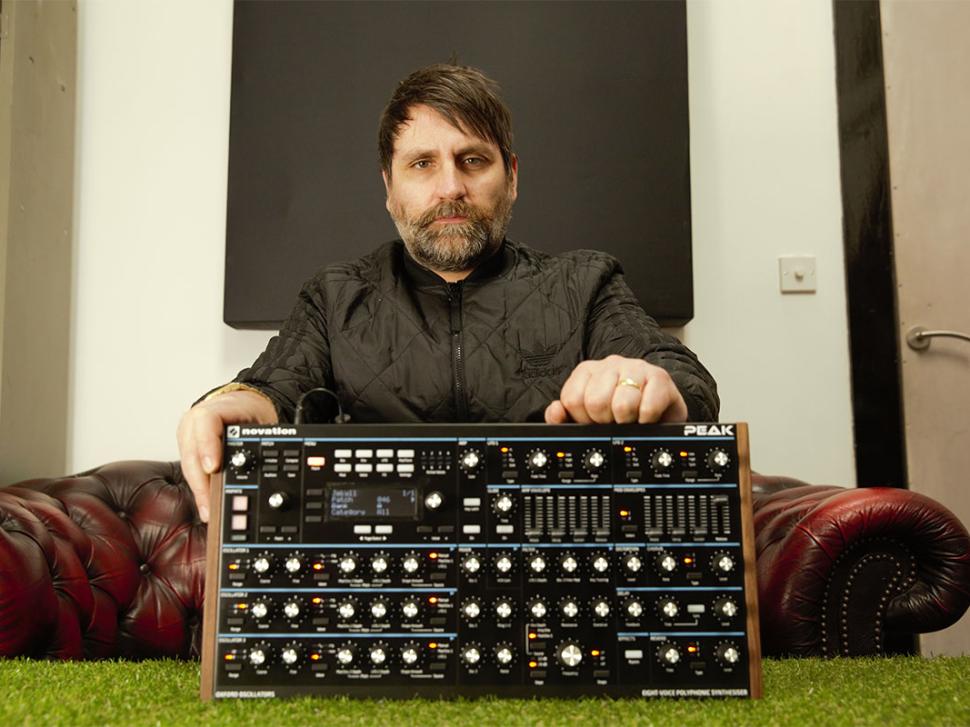
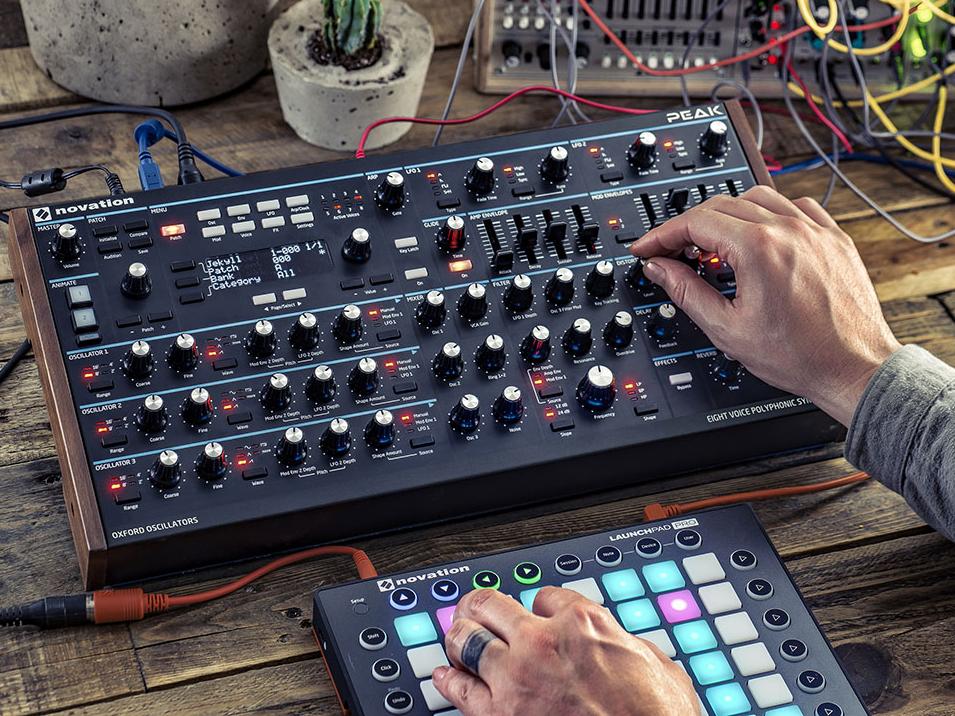
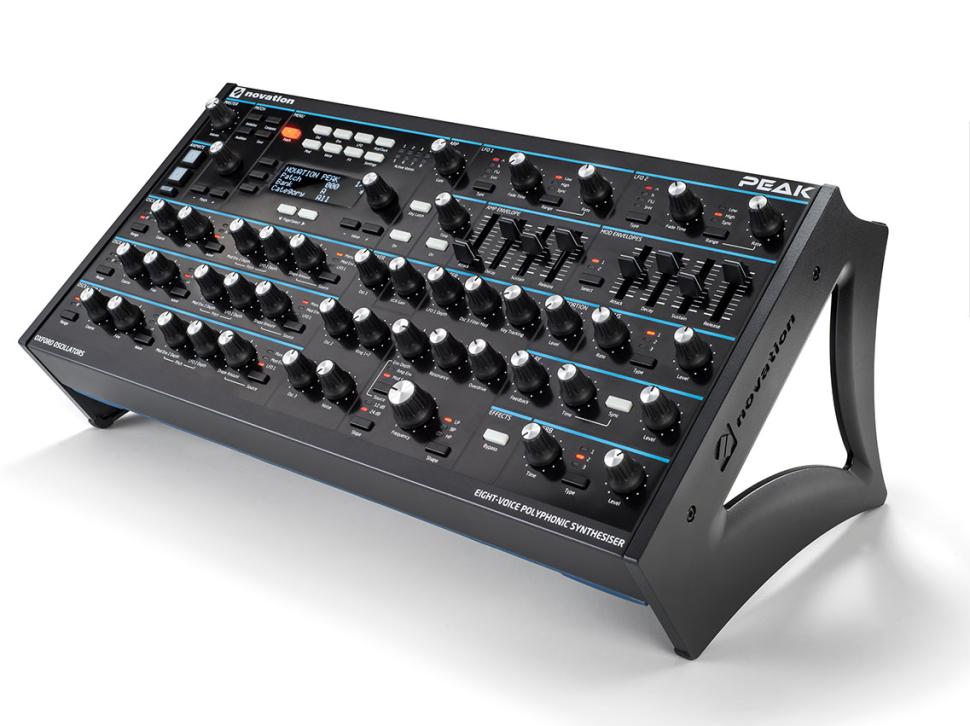
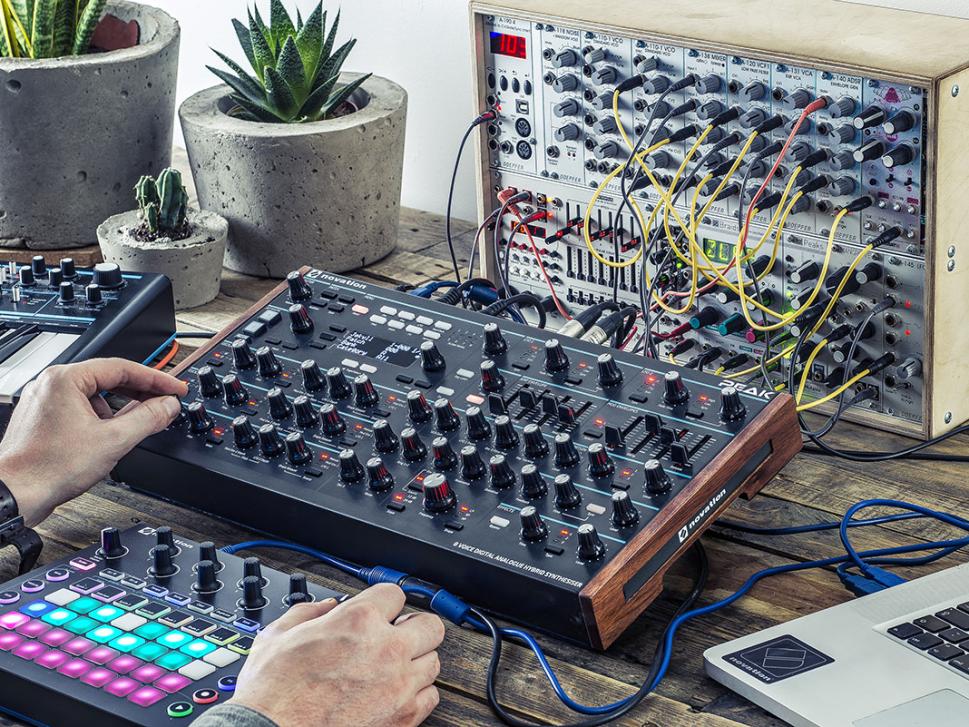
Discovering, exploring and developing the idea of using a very powerful FPGA (Field Programmable Gate Array) as the main processor for the synth opened up a new world of possibilities, especially into the digital realm. It was in fact the very fast clock speed of the processor that seemed to be one of the most interesting aspects. After some research and testing, it became clear that using an FPGA meant that we could leverage this incredibly high resolution to generate oscillators digitally, but in essence get them to behave as if it was analogue circuitry producing the waveforms. Using the FPGA also gave us a number of additional benefits alongside the high resolution production of the oscillators too. Due to the nature of FPGAs they can essentially be split up and programmed to do several tasks at once, they are a very versatile processor so things like the digital control of the synth and also the digital effects can be run directly from this same processor at the same high resolution too.
Of course the most important part of any synth’s character is the filter and it was unltimately important to get this part of Peak right too. We always new that we wanted to use the great sounding analogue filter that Chris had designed for the Bass Station 2, (in fact it is the same filter design that Chris Huggett originally used for his Wasp synth with some new tweaks). For Peak we use an OTA based filter which is state variable, this means it has high pass, low pass and band pass states and can be varied between 12dB per 8ve and 24db per octave. The resonance has been extended on Peak’s filter, so it is capable of some very aggressive screaming sounds as well as being perfectly sweet and tamed when it needs to be. We also put in 3 separate points of analogue distortion into the signal path before and after the analog VCA.




Keeping a true analogue filter, distortion and audio path through the amplifier also means that the FPGA is able to be kept for the processes it is very good at such as generating oscillators whilst all the filter and distortion work is kept in the true analogue world and doesn’t load the FPGA at all.
All in all using the FPGA has opened up a world that we have not seen before… super high sample rate digital generation with the benefits of digital oscillator behavior. Keeping the important sonic imprint of the filter in the analogue realm means that we have a very versatile and ultimately fantastic sounding instrument.Beat /Please tell us more about Peak's new Oxford oscillator.
Chris / As I mentioned, Chris Huggett’s synthesiser legacy is huge, he is easily one of the most important synth designers in UK synth history and even to this day he is continuing to innovate and push what modern synthesisers are capable of. The pioneering work on the FPGA aspect of Peak’s synth engine is something to be really proud of and so we decided to honour this new technology with the name New Oxford Oscillators. Chris lives in Oxford himself and of course his legacy instruments cannot be failed to be associated with the city… Oxford Synth Company’s OSCar!
I also found out recently that this has also quite a bearing on me personally too. The Wasp was made in a tiny village (population under 800) just outside Oxford. This village was where my Dad was born and I visited very regularly in my own childhood. The Wasp was actually being made about 300 metres away from my grans house while I was running around catching butterflies with my gran!!! Anyway…I digress (laughs).
The Oxford oscillators themselves are a huge part of the Peak story, I’ve mentioned about the powerful FPGA processor generating the oscillators, but in terms of power they are very impressive too. Normally a digital synth will produce its algorithms in a DSP chip and then send that out into the analogue world through a DAC. Mostly, off-the shelf-chips are used for this and generally you would have a DAC that is producing a waveform with a sample rate of 48 kHz. This of course means that the resolution of the waveform is going to be made of 48000 samples per second. This is already a very high and usable resolution, but it’s not without its issues. Aliasing, especially at higher register notes, can become an issue and that may mean that some kind of band limiting is applied to the DSP generated waveforms to combat this. The FPGA we are using is actually generating the waveform at 24 MHz… that’s 24 million times a second and 500 times faster than 48 kHz! The DAC on the FPGA is essentially built into the processor meaning the signal of the FPGA is also coming directly out of the processor using a single wiggling bit (or bitstream) moving at the same incredibly high resolution.This output followed by a simple capacitor and resistor filter afterwards to smooth the signal gives us the ability to get the oscillator out of the FPGA essentially sounding and behaving like an analogue oscillator. Any aliasing issues are pushed way out of the realms of human hearing and so the waveforms are non band-limited too.
The advantage to using digital oscillators is that we don’t just have to stick with traditional analogue waveforms either. We use NCOs (Numerically Controlled Oscillators) for the square, triangle and sawtooth waveforms which produce a mathematically pure waveform. Because they are digital oscillators we can also take advantage of different types of oscillators such as wavetables, we can also apply waveshaping to the NCOs too). This all vastly increases the power of the synth and gives it a unique and individual type of synthesis and character without any compromise on sound at all. These oscillators are then of course run through the analogue section of Peak to give the instrument an even more authentic and sonically beautiful sound.
Beat / Which are the benefits of the powerful processor used in Peak?
Chris / The processor in Peak is able to generate the Oscillators at the super high resolution but it is also capable of acting as the controller and also the effects processor of the synth as well. This means that the single highly spec’d processor is able to take on the job of several DSPs at the same time without any compromise of performance. For example all the top panel control and internal modulators are looked after by the FPGA too and a good example of this power is in the LFO section. Peak actually has 16 independent LFO’s there are two for each voice and even though they are digital LFOs (something traditionally very difficult to get running at usable audio rate speeds) Peak’s LFOs are capable of up to 1.6kHz modulation speeds… this is way into the upper audio range and they sound fantastic. Also the envelopes are capable of being very very short and snappy indeed. I think its the snappiest envelope decay I’ve heard on a Novation synth.
The effects processor is also being generated on the FPGA chip which means that the effects themselves sound stunning, in particular the reverb. When I asked Chris Huggett about the how good the reverb sounded he told me it was a combination of a brand new reverb algorithm written especially for Peak and the power of the handling on the FPGA.
So there are many advantages to using this technology too, it really does feel like the FPGA has heralded a new era in synth design.
Beat / Which are the most exciting features of Peak to your mind?
Chris / There are far too many to list here but here’s a few of my favourite.
The Reverb – there is something very very special about the Reverb Chris has designed in Peak it is so clean and fresh and can be huge…You can dial in a decay time of around 2 minutes too and if you play with the room size button you can get some wonderful modulation sounds from it on it’s own!
Linear FM – listening to oscillators cross modulate themselves when set to FM in the modulation matrix is a lot of fun, especially when you start to use some of the alternative wave shapes or wavetables as sources and destinations. Things can get pretty aggressive pretty quickly, then you can smooth it out with the creamy filter.
Exponential FM – with the speed of the LFOs one of my favourite tricks (pretty much on any synth really) is a wonderfully fast positive sawtooth LFO on the filter then brought down to sub audio LFO speeds. One of my favourite sounds ever.
Osc 3 Modulation to filter – there are many hardwired connections on Peak although there are many many more available in the mod matrix. One hardwired connection though is the Osc 3 as an FM modulator for the filter detuning Osc 3 slightly and then applying it as an FM control to the filter gets some unique, usable and sonically complex sounds very quickly.




Unison modes – Of course Peak is an 8-voice poly synth, but it is easy enough to stack the voices in unison, there something very cathartic in using 3 triple saw oscillators per voice with an 8 note unison (laughs). That makes a 72 oscillator sawtooth sound... which is pretty powerful!
The Layout – I think this is actually my favourite aspect of Peak, the design of the top panel means it is one of theeasiest synths I’ve ever used. I feel confident that from an initialised patch (yes there is a dedicated initialise patch button too), I can make a great sound literally within seconds. Then I can tweak and tweak until it’s a killer sound without any hassle. There are many normalled points on the synths panel but under the hood with the Modulation matrix and additional menu based features the Peak is an incredibly powerful, but very easy to use instrument. It has quickly become my go to synth for pretty much everything today.


